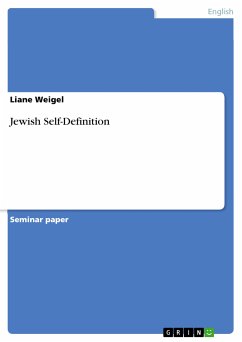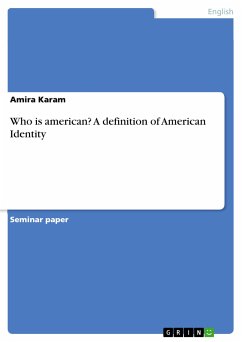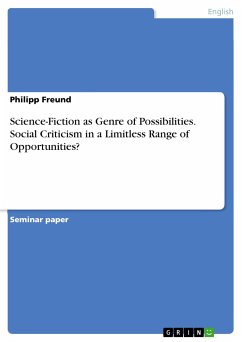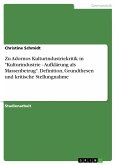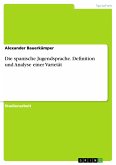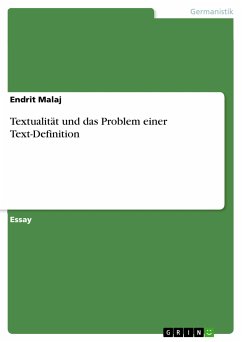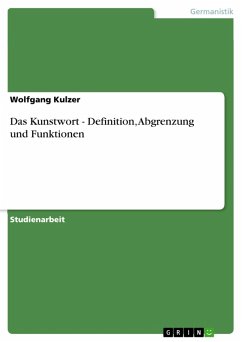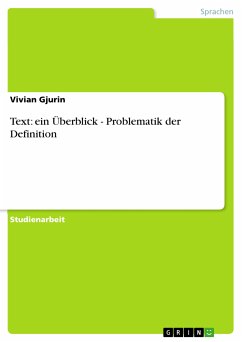Seminar paper from the year 2003 in the subject English Language and Literature Studies - Culture and Applied Geography, grade: Good, University of Potsdam (Institute for Anglistics/American Studies), language: English, abstract: Assuming an absolute number of 17.5 million Jewish people in the world and 6.9 million of them living in the USA, a discussion of The Jews in America seems indispensable in the context of American Cultural Studies. Jewish identity in this context has been approached in a greater focus with a wider public, political and religious discussion of the question "Who is a Jew?" 1 . This question, which is certainly connected to a difficult answer, became a very important factor, especially for the Jews in the USA during the 20 th century. Therefore this paper attempts to analyse the changing Jewish self- definition in the USA during the 20 th Century. Although it can or will not answer the complex question, "Who is a Jew?" correctly or in a wider sense completely, it will focus on the development of Jewish continuity and the changes in self-definition in the pluralistic society of the United States during the 20 th century. A short acknowledgement on Jewish self- definition and - identification in general will be provided, before facts referring to assimilation, Americanisation and authenticity are discussed. The starting point for the changing Jewish self-definition, which is connected to the immigration at the end of the 19 th and the beginning of the 20 th century will be analysed in the second part. The Holocaust, the worst genocide of the century, was, especially for the German Jews, a dramatic experience. Besides traumatic feelings, the perception of the Holocaust and anti-Semitism in general mainly influenced the Jewish self- definition of American Jews, referring to the concept of Zionism and Redemption as strictly linked to a concept of hostility towards Jews. Considering the strong sense of self- identification and self- definition of the Jewish people will therefore lead to the third part where the influence of the perception of the Holocaust and anti- Semitism on Jewish self- definition is analysed. The following part will refer to the appearance of revolutionary ideas as usually revealed in the development of almost every people, society or religion. In the USA the influence of a pluralistic society opens possibilities to reform Jewishness and Judaism and results in the emergence of two types of Jews in the 60s and 70s that still dominate American Jewry.
Dieser Download kann aus rechtlichen Gründen nur mit Rechnungsadresse in A, B, BG, CY, CZ, D, DK, EW, E, FIN, F, GR, HR, H, IRL, I, LT, L, LR, M, NL, PL, P, R, S, SLO, SK ausgeliefert werden.

